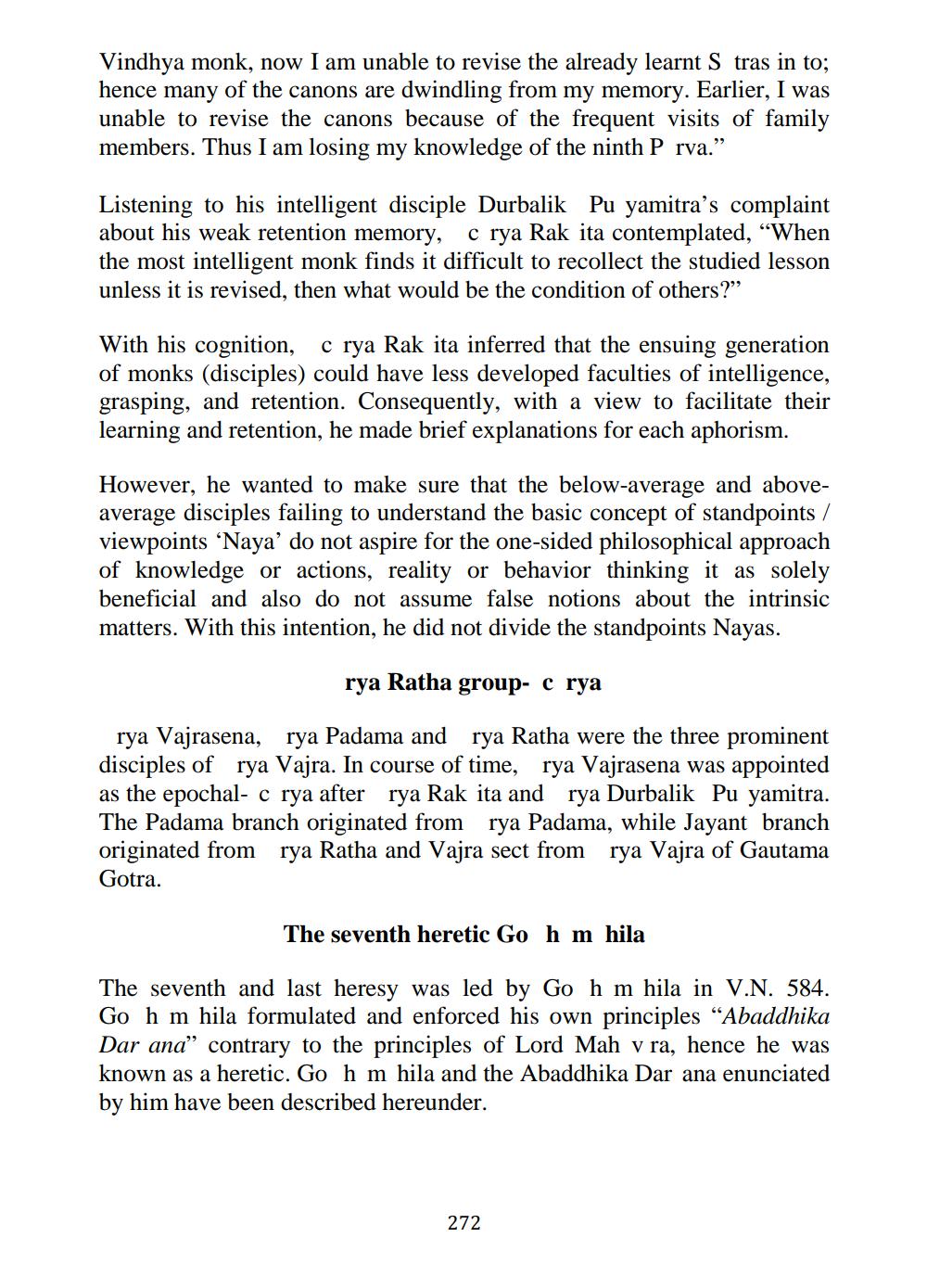________________
Vindhya monk, now I am unable to revise the already learnt S tras in to; hence many of the canons are dwindling from my memory. Earlier, I was unable to revise the canons because of the frequent visits of family members. Thus I am losing my knowledge of the ninth P_rva."
Listening to his intelligent disciple Durbalik Pu yamitra's complaint about his weak retention memory, c rya Rak ita contemplated, "When the most intelligent monk finds it difficult to recollect the studied lesson unless it is revised, then what would be the condition of others?"
With his cognition, c rya Rak ita inferred that the ensuing generation of monks (disciples) could have less developed faculties of intelligence, grasping, and retention. Consequently, with a view to facilitate their learning and retention, he made brief explanations for each aphorism.
However, he wanted to make sure that the below-average and aboveaverage disciples failing to understand the basic concept of standpoints / viewpoints 'Naya' do not aspire for the one-sided philosophical approach of knowledge or actions, reality or behavior thinking it as solely beneficial and also do not assume false notions about the intrinsic matters. With this intention, he did not divide the standpoints Nayas.
rya Ratha group- c rya
rya Vajrasena, rya Padama and rya Ratha were the three prominent disciples of rya Vajra. In course of time, rya Vajrasena was appointed as the epochal- c rya after rya Rak ita and rya Durbalik Pu yamitra. The Padama branch originated from rya Padama, while Jayant branch originated from rya Ratha and Vajra sect from rya Vajra of Gautama
Gotra.
The seventh heretic Go hm hila
The seventh and last heresy was led by Go h m hila in V.N. 584. Go h m hila formulated and enforced his own principles "Abaddhika Dar ana" contrary to the principles of Lord Mah v ra, hence he was known as a heretic. Go h m hila and the Abaddhika Dar ana enunciated by him have been described hereunder.
272




